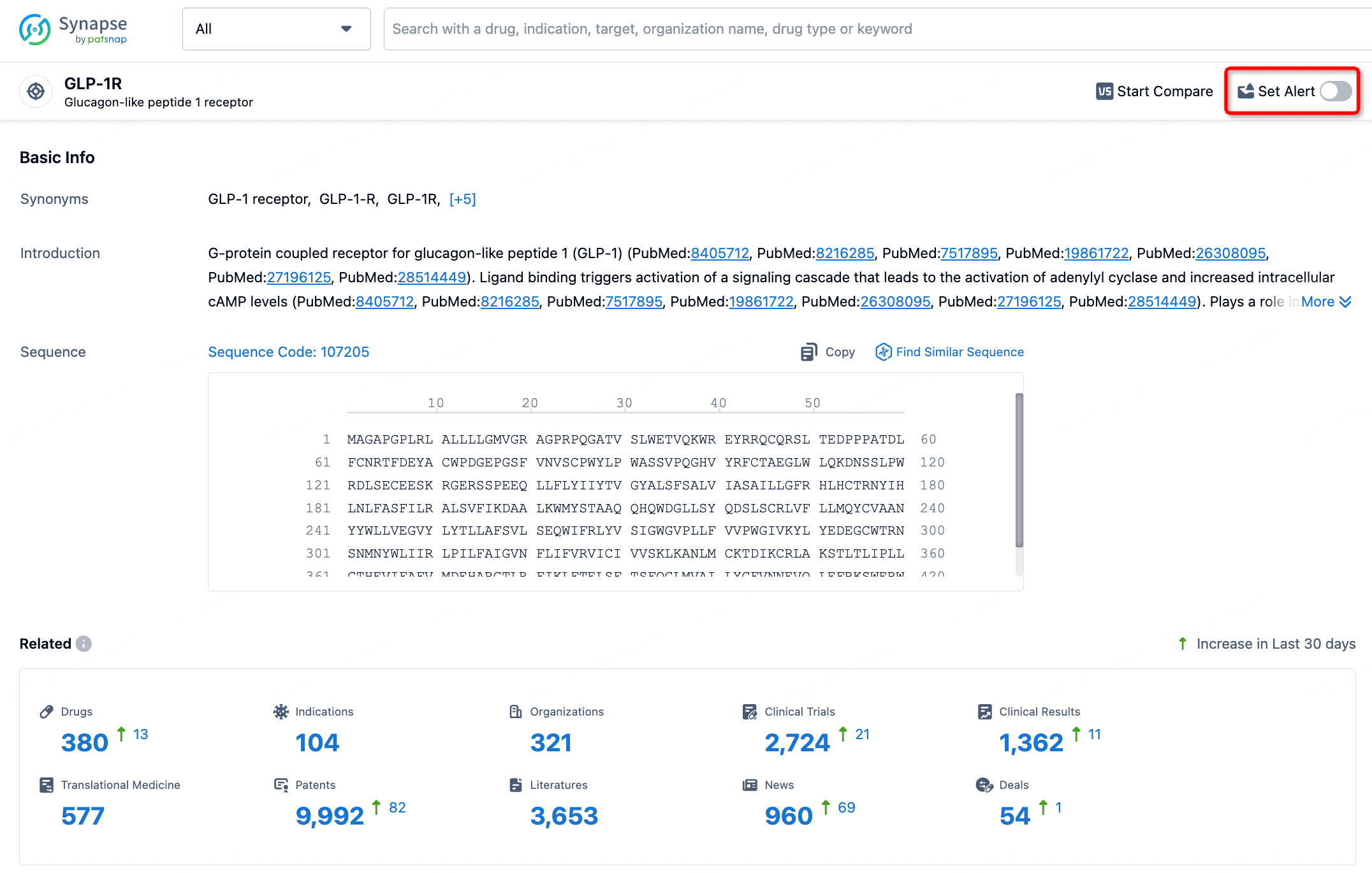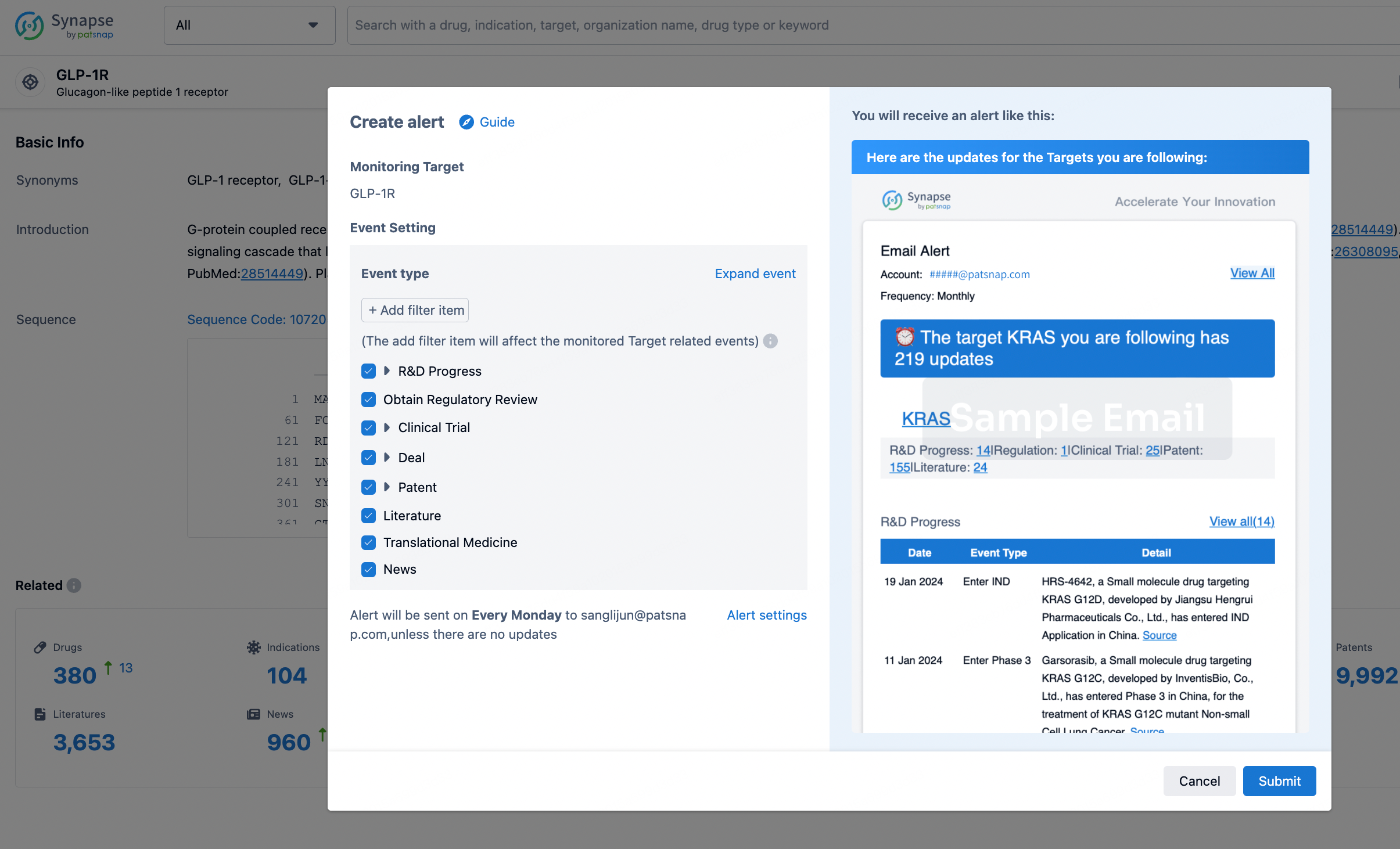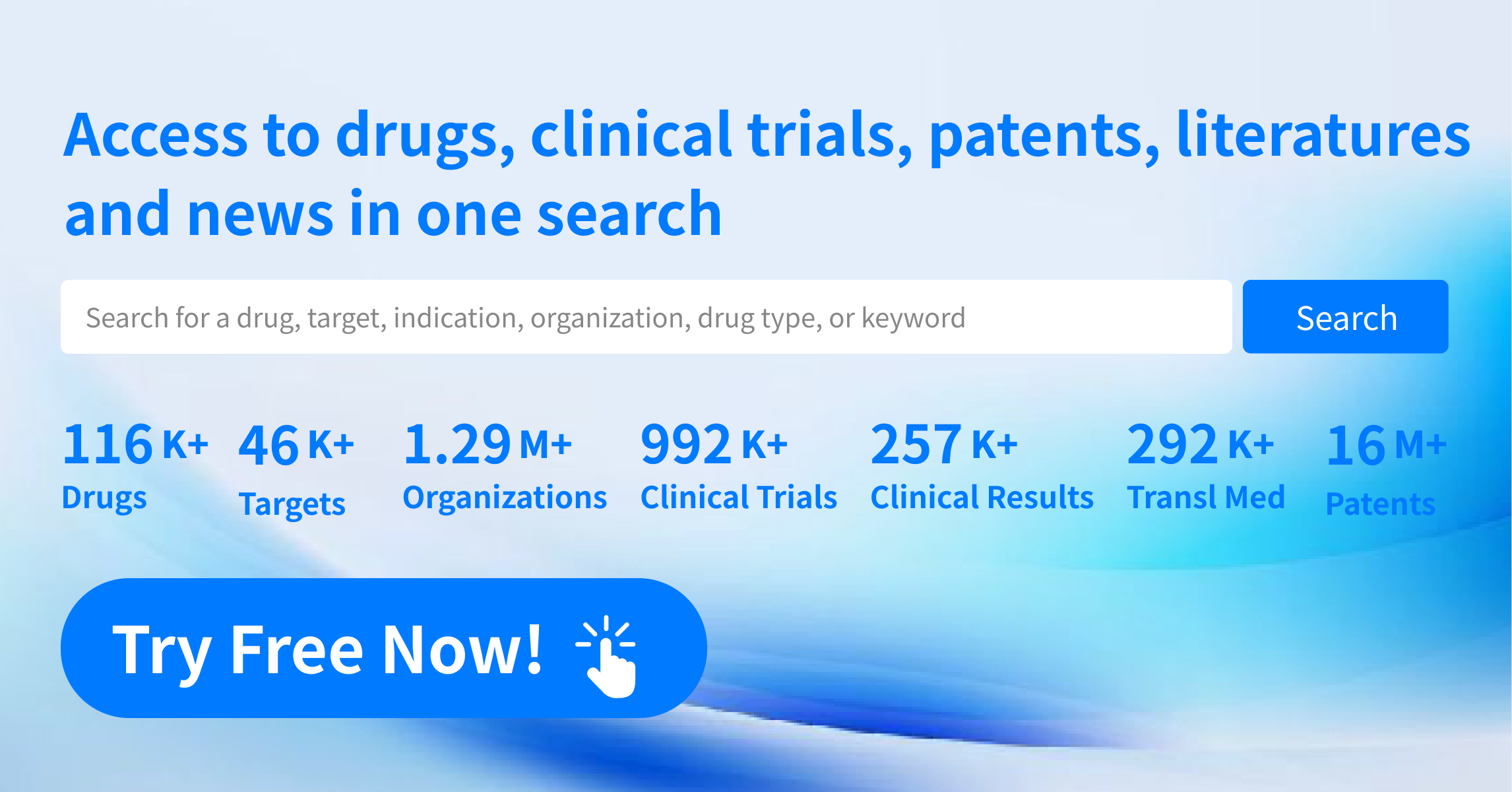Request Demo
What are SUR1 stimulants and how do they work?
25 June 2024
Sulfonylurea receptor 1 (SUR1) stimulants are a class of drugs known for their critical role in managing certain medical conditions, particularly those related to the pancreas and blood sugar regulation. Understanding these stimulants requires a closer look at their mechanisms, applications, and the physiological basis for their use. This exploration will shed light on their pivotal role in modern medicine.
SUR1 stimulants operate by targeting the sulfonylurea receptor 1, which is a part of the ATP-sensitive potassium (K_ATP) channels found in various tissues, most notably in pancreatic beta cells. The K_ATP channels are essential for regulating insulin secretion. These channels consist of two main components: the inward-rectifying potassium channel subunit (Kir6.x) and the regulatory sulfonylurea receptor subunit (SUR). When functioning correctly, these channels help maintain cell membrane potential and regulate insulin release in response to blood glucose levels.
SUR1 stimulants work by binding to the SUR1 subunit of the K_ATP channels. This binding leads to the inhibition of the channel's activity, causing the membrane of the pancreatic beta cells to depolarize. The depolarization, in turn, triggers the opening of voltage-dependent calcium channels. The influx of calcium ions into the cells promotes the exocytosis of insulin-containing vesicles, thereby increasing insulin secretion. This cascade of events ultimately helps to lower blood glucose levels, which is particularly beneficial in the treatment of conditions like type 2 diabetes.
One of the primary uses of SUR1 stimulants is in the management of type 2 diabetes mellitus, a condition characterized by insulin resistance and an inability of the pancreas to produce sufficient insulin. Traditional SUR1 stimulants, such as glibenclamide (also known as glyburide), glipizide, and glimepiride, are well-established in this therapeutic area. These drugs help patients achieve better glycemic control by ensuring a more consistent and regulated release of insulin, thereby reducing the prevalence of hyperglycemic episodes.
In addition to their role in diabetes management, SUR1 stimulants have shown promise in treating a variety of other medical conditions. For instance, there is ongoing research into their potential use in addressing neonatal diabetes, a rare form of diabetes that occurs in newborns and is often linked to genetic mutations affecting the K_ATP channels. By targeting these channels, SUR1 stimulants might offer a therapeutic option for managing this condition.
Another intriguing area of research involves the role of SUR1 stimulants in neuroprotection. Recent studies suggest that these drugs may have the potential to mitigate the effects of neurological injuries, such as those resulting from stroke or traumatic brain injury. The rationale behind this application lies in the fact that K_ATP channels are also found in the brain, where they play a role in maintaining cellular homeostasis. By modulating these channels, SUR1 stimulants could help preserve neuronal function and reduce damage in the aftermath of acute neurological insults.
Beyond these specific uses, the pharmacological properties of SUR1 stimulants continue to be explored for various potential applications. Their ability to influence K_ATP channel activity makes them candidates for investigating other conditions where these channels are implicated, such as certain cardiac disorders. However, the therapeutic scope of SUR1 stimulants is not without its challenges. The risk of hypoglycemia—a condition where blood sugar levels drop too low—is a significant concern, necessitating careful dose management and monitoring.
In conclusion, SUR1 stimulants represent a fascinating and vital class of drugs with diverse applications in the medical field. From their well-established role in diabetes management to emerging research on their neuroprotective properties, these drugs demonstrate the importance of understanding and modulating cellular mechanisms for therapeutic benefit. As research continues to evolve, the potential for SUR1 stimulants to address a broader range of conditions underscores their significance in contemporary pharmacology.
SUR1 stimulants operate by targeting the sulfonylurea receptor 1, which is a part of the ATP-sensitive potassium (K_ATP) channels found in various tissues, most notably in pancreatic beta cells. The K_ATP channels are essential for regulating insulin secretion. These channels consist of two main components: the inward-rectifying potassium channel subunit (Kir6.x) and the regulatory sulfonylurea receptor subunit (SUR). When functioning correctly, these channels help maintain cell membrane potential and regulate insulin release in response to blood glucose levels.
SUR1 stimulants work by binding to the SUR1 subunit of the K_ATP channels. This binding leads to the inhibition of the channel's activity, causing the membrane of the pancreatic beta cells to depolarize. The depolarization, in turn, triggers the opening of voltage-dependent calcium channels. The influx of calcium ions into the cells promotes the exocytosis of insulin-containing vesicles, thereby increasing insulin secretion. This cascade of events ultimately helps to lower blood glucose levels, which is particularly beneficial in the treatment of conditions like type 2 diabetes.
One of the primary uses of SUR1 stimulants is in the management of type 2 diabetes mellitus, a condition characterized by insulin resistance and an inability of the pancreas to produce sufficient insulin. Traditional SUR1 stimulants, such as glibenclamide (also known as glyburide), glipizide, and glimepiride, are well-established in this therapeutic area. These drugs help patients achieve better glycemic control by ensuring a more consistent and regulated release of insulin, thereby reducing the prevalence of hyperglycemic episodes.
In addition to their role in diabetes management, SUR1 stimulants have shown promise in treating a variety of other medical conditions. For instance, there is ongoing research into their potential use in addressing neonatal diabetes, a rare form of diabetes that occurs in newborns and is often linked to genetic mutations affecting the K_ATP channels. By targeting these channels, SUR1 stimulants might offer a therapeutic option for managing this condition.
Another intriguing area of research involves the role of SUR1 stimulants in neuroprotection. Recent studies suggest that these drugs may have the potential to mitigate the effects of neurological injuries, such as those resulting from stroke or traumatic brain injury. The rationale behind this application lies in the fact that K_ATP channels are also found in the brain, where they play a role in maintaining cellular homeostasis. By modulating these channels, SUR1 stimulants could help preserve neuronal function and reduce damage in the aftermath of acute neurological insults.
Beyond these specific uses, the pharmacological properties of SUR1 stimulants continue to be explored for various potential applications. Their ability to influence K_ATP channel activity makes them candidates for investigating other conditions where these channels are implicated, such as certain cardiac disorders. However, the therapeutic scope of SUR1 stimulants is not without its challenges. The risk of hypoglycemia—a condition where blood sugar levels drop too low—is a significant concern, necessitating careful dose management and monitoring.
In conclusion, SUR1 stimulants represent a fascinating and vital class of drugs with diverse applications in the medical field. From their well-established role in diabetes management to emerging research on their neuroprotective properties, these drugs demonstrate the importance of understanding and modulating cellular mechanisms for therapeutic benefit. As research continues to evolve, the potential for SUR1 stimulants to address a broader range of conditions underscores their significance in contemporary pharmacology.
How to obtain the latest development progress of all targets?
In the Synapse database, you can stay updated on the latest research and development advances of all targets. This service is accessible anytime and anywhere, with updates available daily or weekly. Use the "Set Alert" function to stay informed. Click on the image below to embark on a brand new journey of drug discovery!
AI Agents Built for Biopharma Breakthroughs
Accelerate discovery. Empower decisions. Transform outcomes.
Get started for free today!
Accelerate Strategic R&D decision making with Synapse, PatSnap’s AI-powered Connected Innovation Intelligence Platform Built for Life Sciences Professionals.
Start your data trial now!
Synapse data is also accessible to external entities via APIs or data packages. Empower better decisions with the latest in pharmaceutical intelligence.


